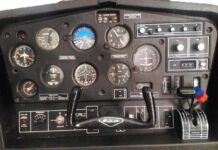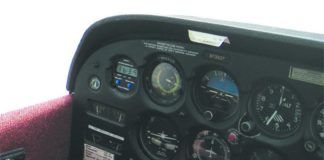Although my Twin-Cessna 340 has been amazingly reliable, it is still a complex aircraft with two turbocharged engines, pressurization, and known-ice certification, among other items. So, predictably, it has presented me with some situations that were obvious no-go items, some that clearly were just deal-with-it-later, and some that required some careful analysis.
I tend to be a reasonably conservative pilot. I credit this attitude to far more than my share of stupid pilot tricks that didn’t end disastrously, and the rigorous training and operations of the airline where I flew.
Nonetheless, there remain some of those grey situations where analysis and judgment must enter into the go/no-go choice. And, that’s where I wrestle most with the decision.
One element in the analysis I use is to consider the mission. If chances are low for any negative impact from a situation, and if I am already on a trip, I will likely opt to continue the trip so long as the failure isn’t clearly critical. But, in those cases, I might well choose not to begin a trip.
I’ve written about one such situation. I had a two-plus hour trip planned one time that was to begin on Saturday morning. Late Friday afternoon, the annual was being wrapped up and the mechanic asked for a test flight. The flight went fine, but on landing I noticed one of the vacuum pumps was inop. It being late on a Friday, there was no way to get a replacement in the next 18 hours before the planned trip. That left one pump, working fine, but no redundancy.
Now, I’d replaced all the air-driven vacuum instruments, so IMC wasn’t a concern. The vacuum pumps—one on each engine, working together—at that point only powered the pressurization out-flow valves and provided pressure to the de-ice boots. Since I typically fly in the low flight levels, a loss of pressurization would constitute a problem, but it would still allow me plenty of time to descend safely to a lower altitude.
So, that left the boots. There was no forecast for icing, but the weather conditions suggested the possibility. Ice can quickly become a problem so the inability to shed it could become emergent. After some agonizing soul searching, I concluded that this loss of one of two vacuum pumps fell into the category of being able to continue a trip, but was a no-go item at the beginning of this one, given the possibility of ice.
I’m currently faced with something similar. On a trip yesterday, I had an electric fuel pump fail. This pump serves to provide positive pressure from an auxiliary fuel tank to assure the engine-driven pump is always able to pull fuel. The failed pump really was a just-in-case item. The flight yesterday, even drawing from that tank, was normal and I only noticed the failed pump from the popped circuit breaker.
I have a trip tomorrow. Go, or no-go? The failed pump is only active when I use that aux fuel tank. The trip tomorrow is possible without using the aux tank on that side, so the flight can be completed normally even if the failed pump prevents use of that tank, which it hasn’t yet.
The trip tomorrow is a go, but with modified procedures. I’ll use that aux tank early in the flight to know if it will work. If it doesn’t work, I’ll change my fuel management so as not to need that fuel. If it does work, well, life is good for that trip and I can wait until a replacement pump is available.
I can manage my fuel to not need that aux fuel if it isn’t available. But, I’ve seen that it probably will be available anyway. I am comfortable with this analysis, but some might not be. You?





